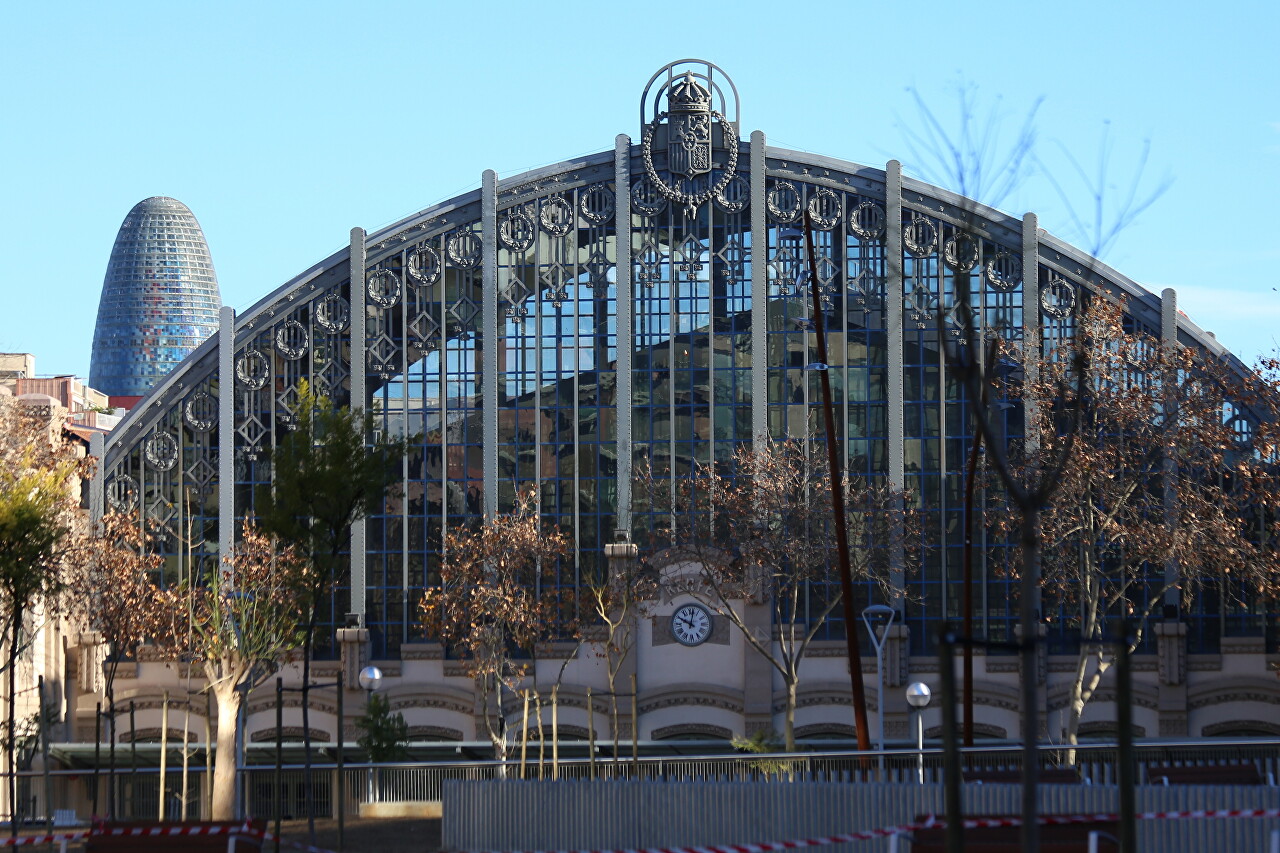Modernism of Ronda de Sant Pere
After yesterday's day's rain and strong wind, it's finally quiet and sunny in the evening. But it's time to move on. From my hotel to the Northern bus Station was just over a kilometer and I went there on foot. On the Boulevard de Sant Pere (Ronda de Sant Pere), I had to take my camera out of my backpack. The street runs along the border of the Eixample district with Gothic and El Born. The architecture of the neighborhoods surrounding San Pierre is an excellent example of the development of the first decades of the 20th century, known as the Art Nouveau era.
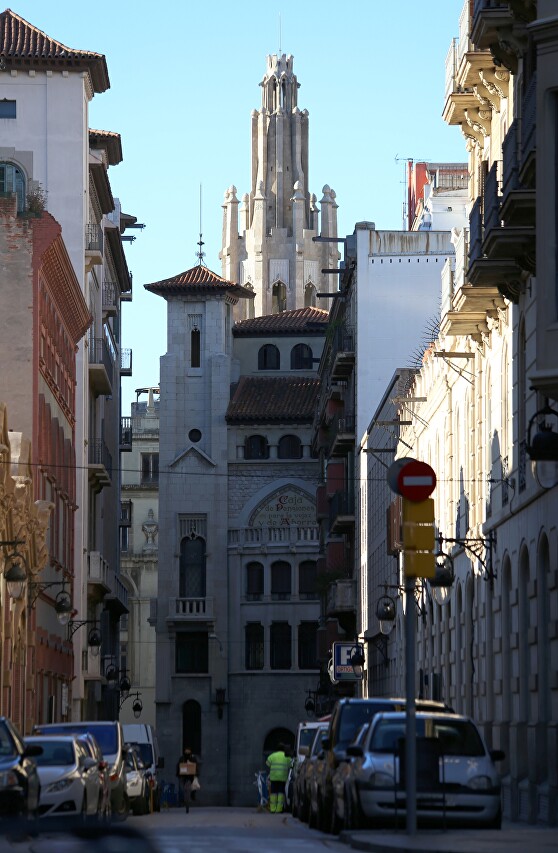
Casa Modest Andreu on Carred d'Alí Bei, 3 was built in 1902-1906, designed by Telm Fernández Janot. This is a typical example of restrained modernism.
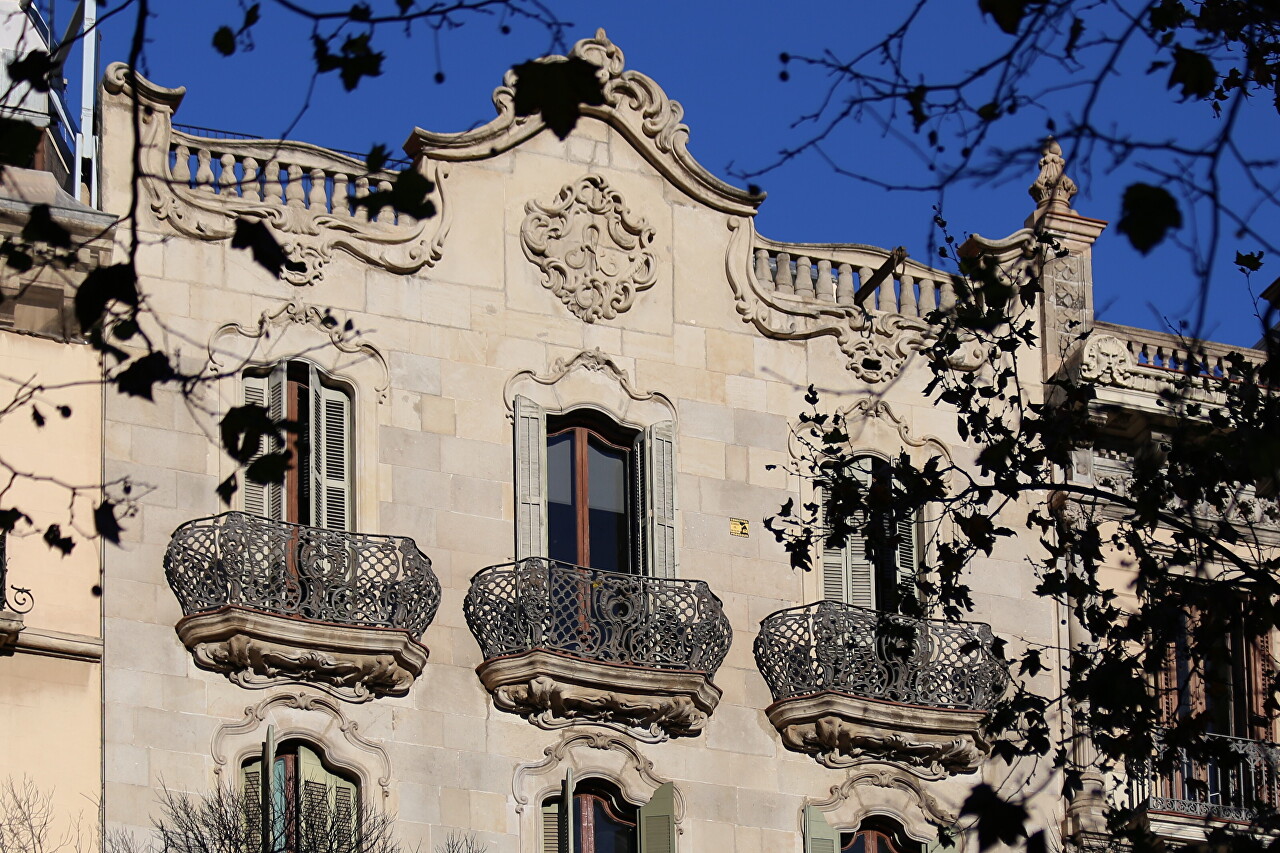
The house of textile manufacturer Josep Roca Umbert (Casa Josep Roca Umbert) on Carred d'Alí Bei 7-9 was built in 1924 by architect Joaquim Bassegoda Amigó.
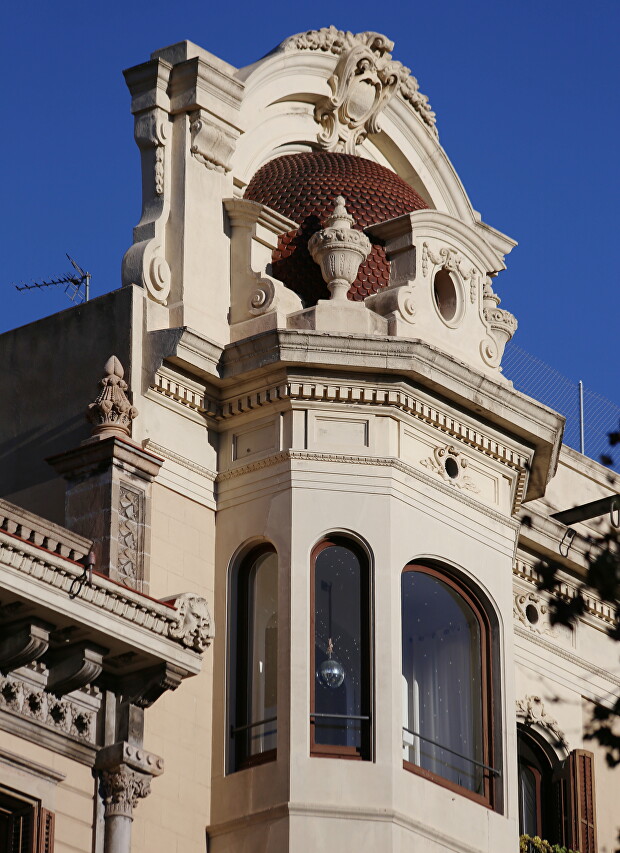
Casa Victorià de la Riva, on the corner of Carred d'Alí Bei and Carrer de Girona, was built in 1899 in the modernist style by Enric Sagnier Villavecchia. In the center of the facade stands a round tower topped with a scaly dome and decorated with sculptures.
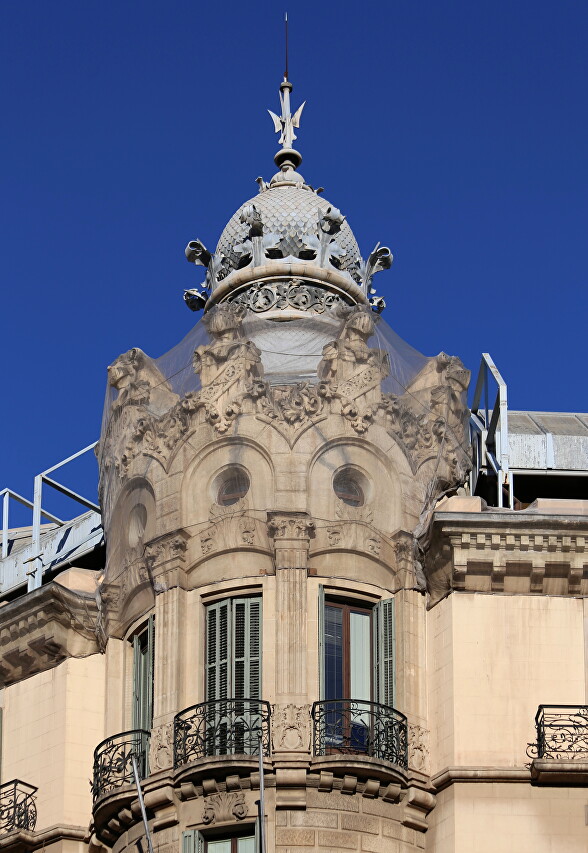
Casa Bartomeu Recolons on the corner of Carrer de Girona was designed by Miguel Pascual Tintorer in 1891.
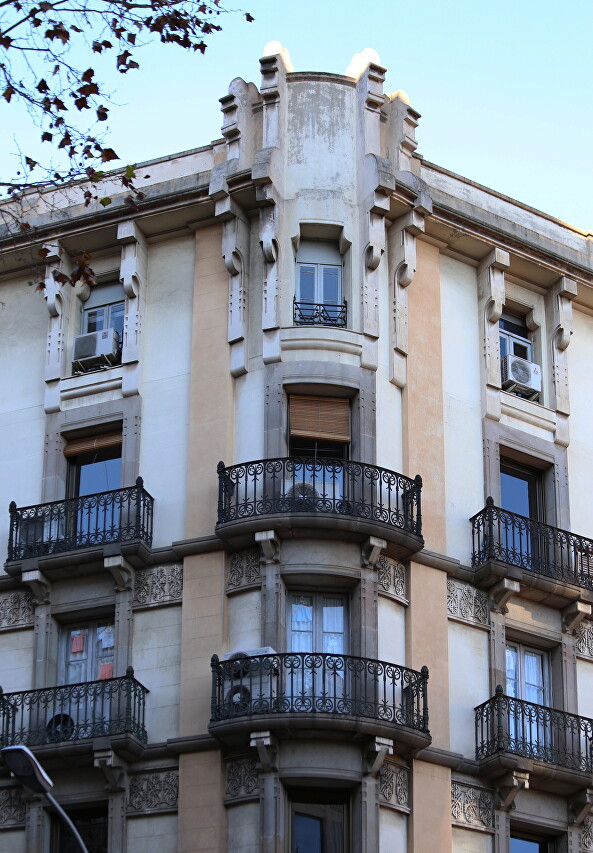
Casa Antoni Agustí on the corner of Bruc Street was built in 1896, designed by Joan Serra Janer. It is an example of an eclectic style, without any concessions to the modernism that flourished at that time. Decorative elements are taken from the repertoire of classicism with the addition of neo-baroque. The walls are covered with a series of geometric graffiti.
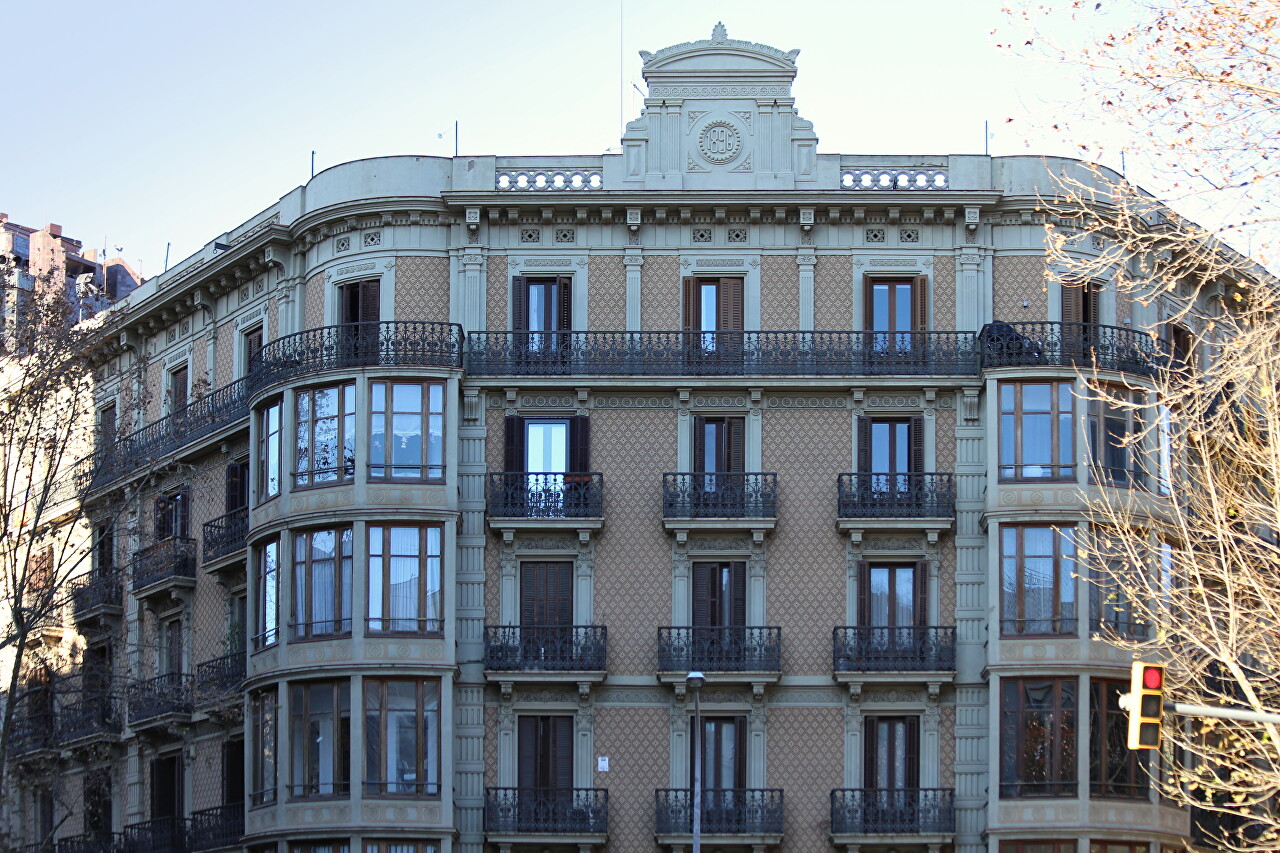
At number 29, we see the eclectic style Casa Manuel Garcia, built in 1926 by the architect Adolf Ruiz Casamitjana.
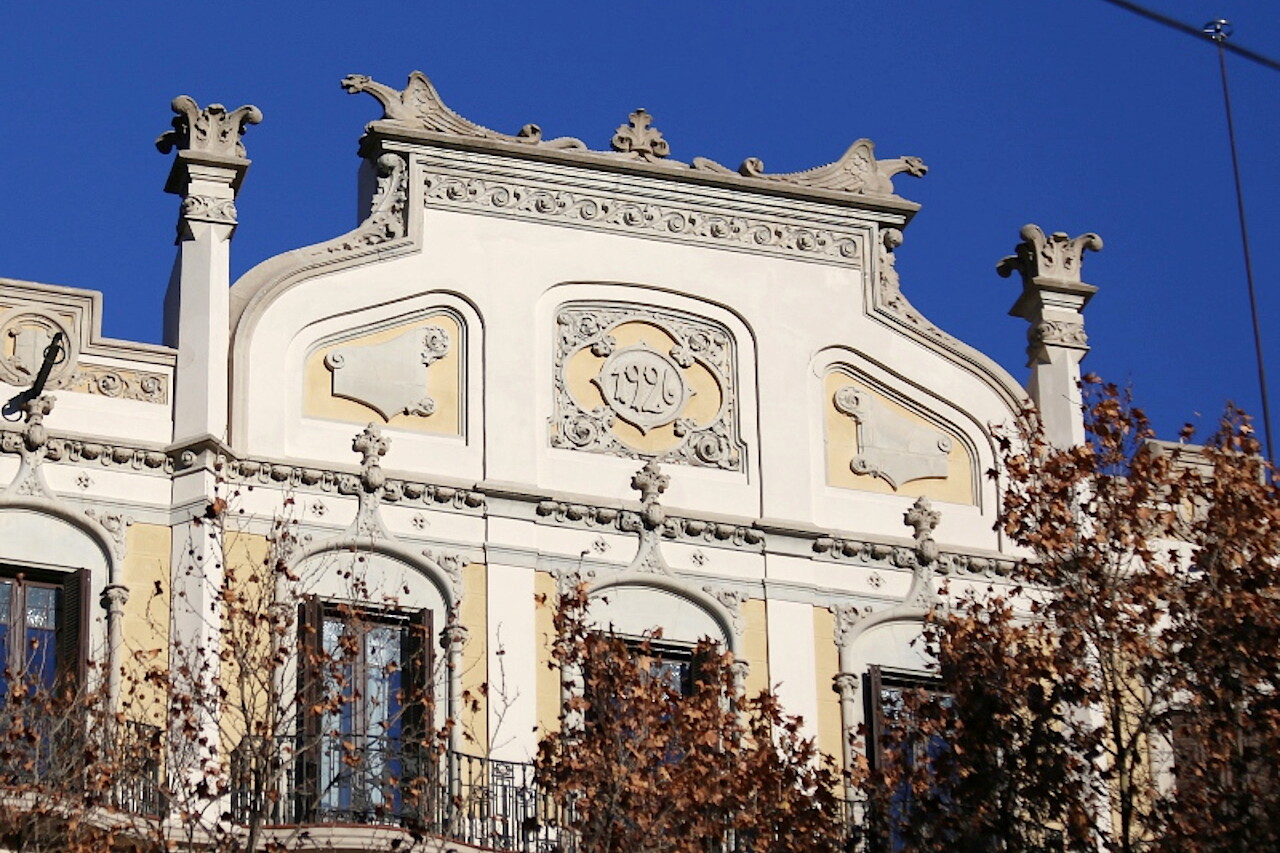
.Casa Isidre Feliu, on the corner of Carrer de Trafalgar and Carrer de Burc, was designed by architect Roc Cot Cot in 1904. The main facade is framed by corner galleries decorated with openwork cast-iron grilles.
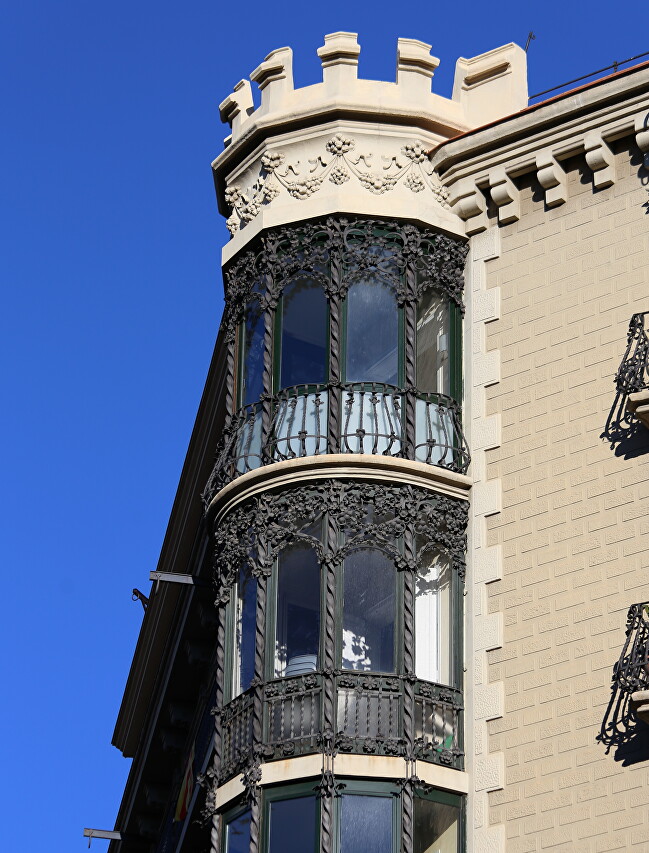
Ornaments with plant reliefs, as well as moldings on the walls imitating hewn stone, are a characteristic feature of most Eixample buildings in the first decade of the twentieth century.
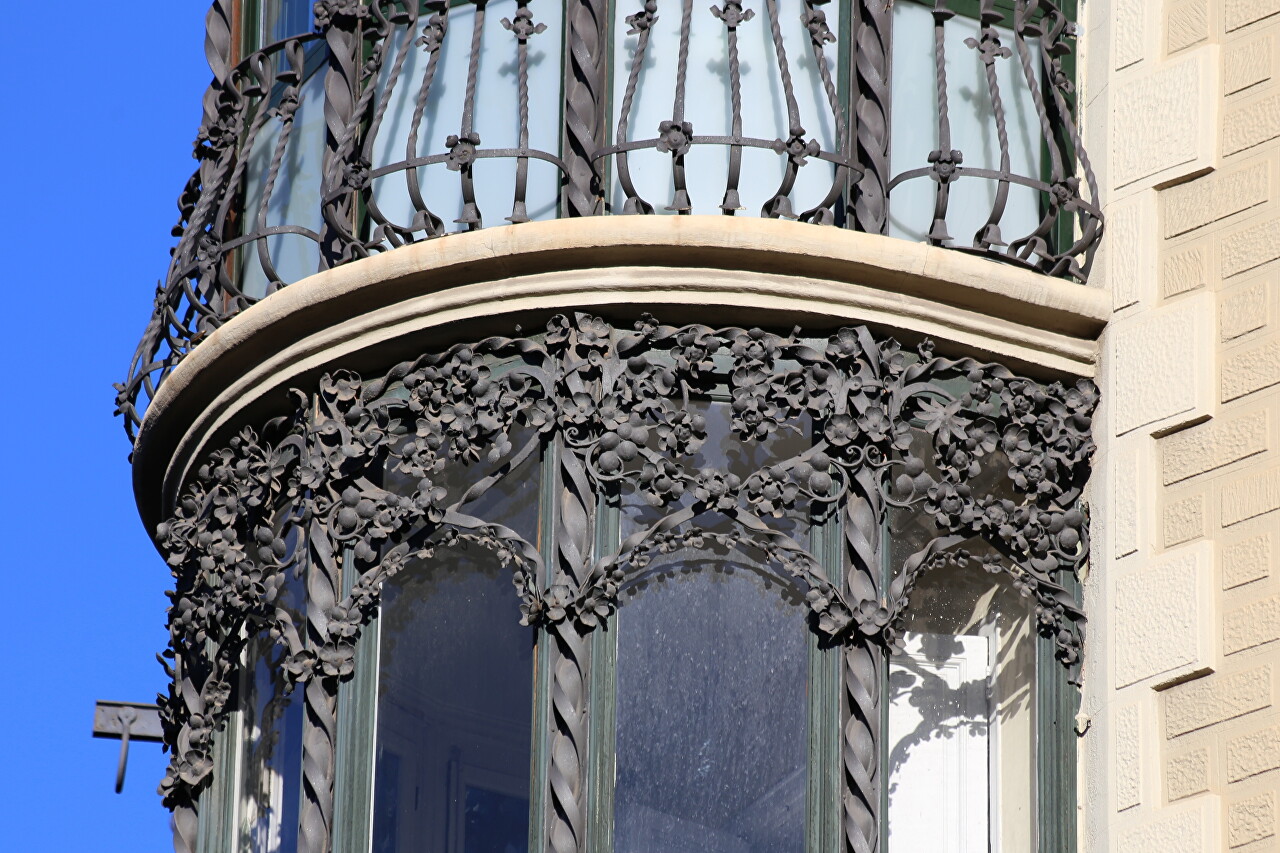
At the corner of Carrer Trafalgar and Carrer de Méndez Núñez is the monumental Casa Josep Padró, a modernist building designed by Antoni Costa Guardiola in 1900. In 1927, architect Juli Batllevell rebuilt the facade, adding balconies.
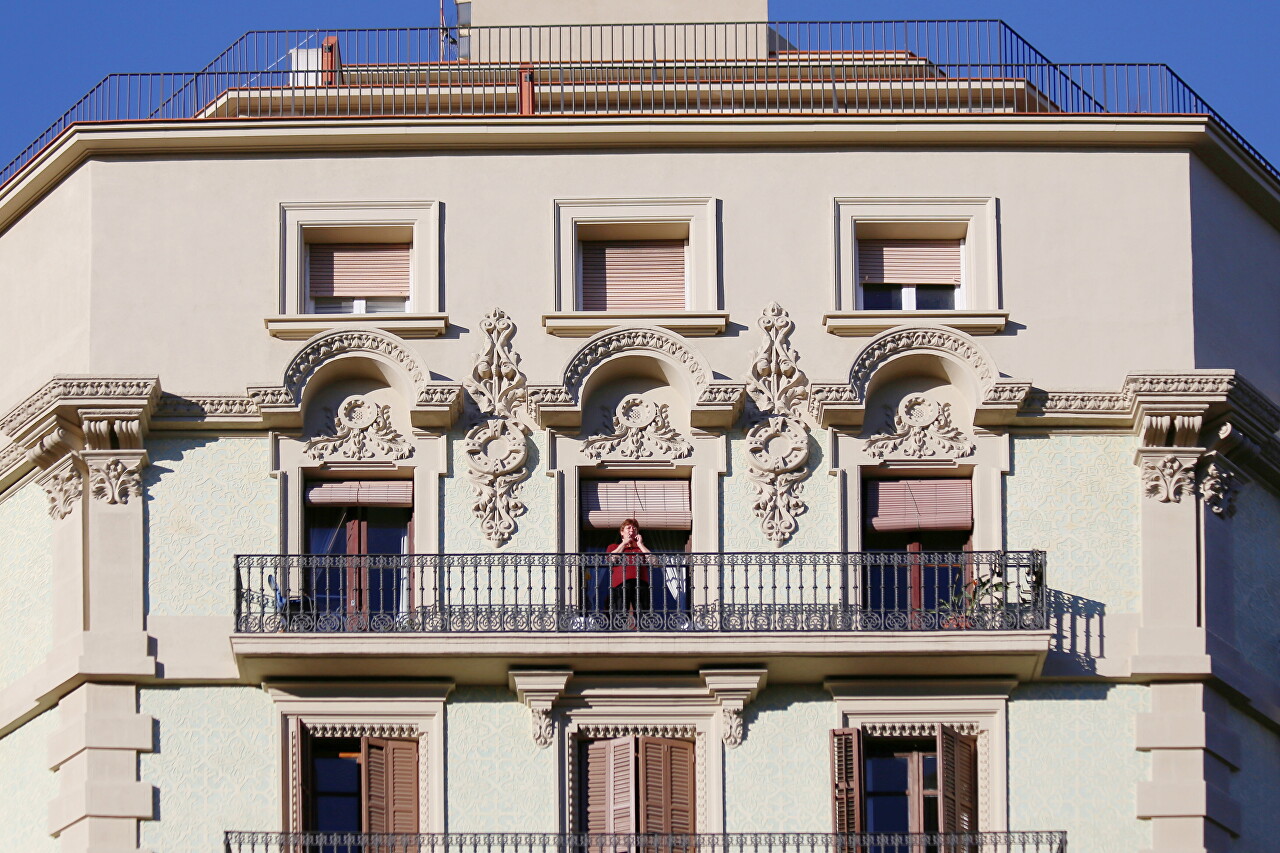
At Passeig de Sant Joan, I noticed a red brick house with a ceramic dome. Casa Enric Laplana (or Estapé) in the Catalan Modernist style was built in 1907 in the Catalan Modernist style. The author of the project is Bernard Martorell i Puig.
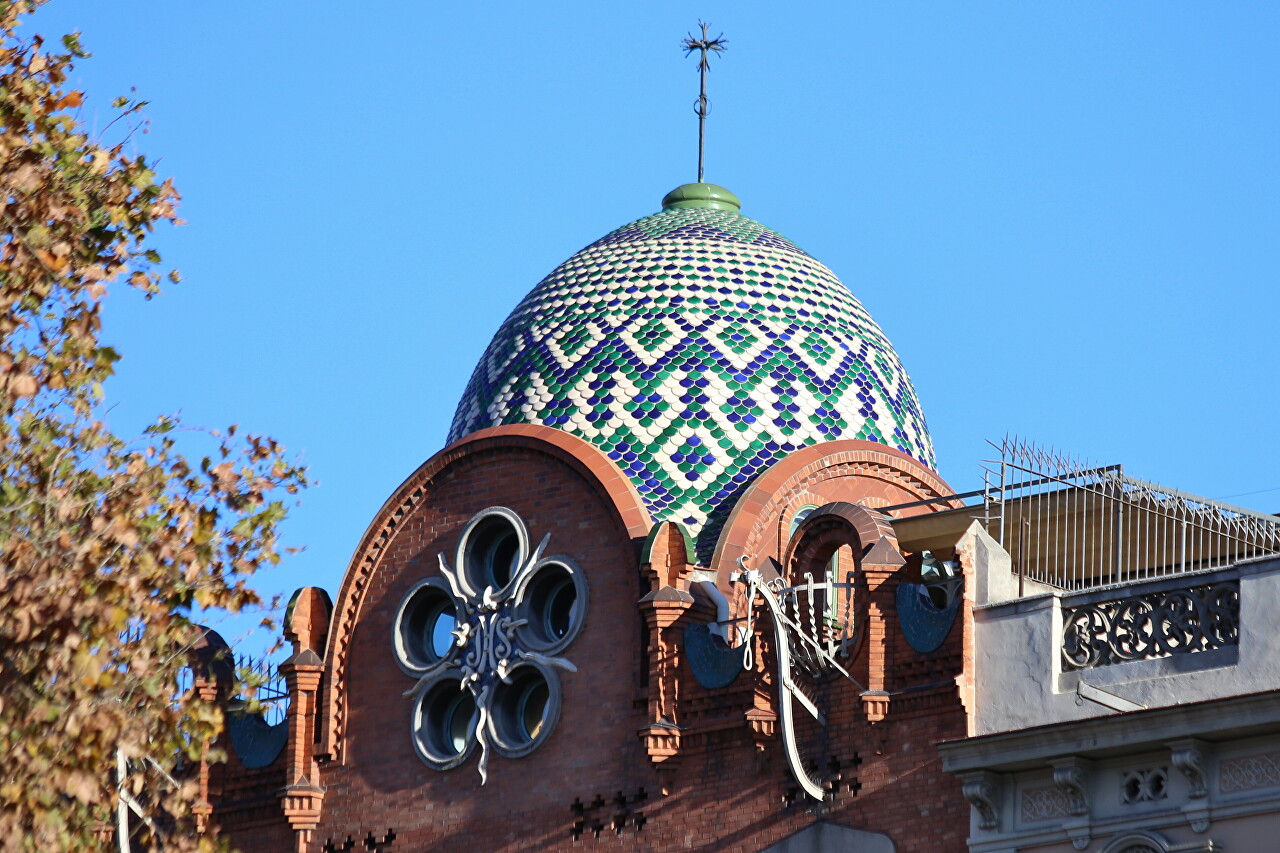
Finally, I reached the Northern Railway Station, which I have already told you about earlier. This was the end of my fourth visit to Barcelona, and then I went to Tarragona.
